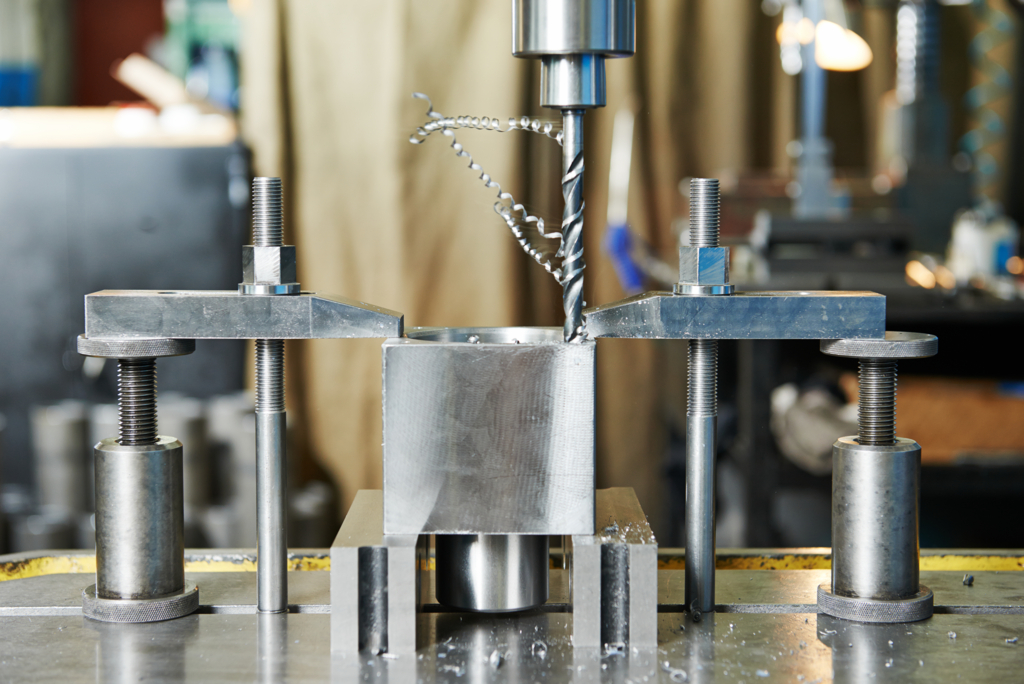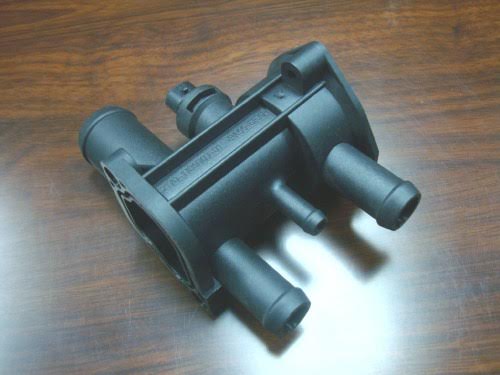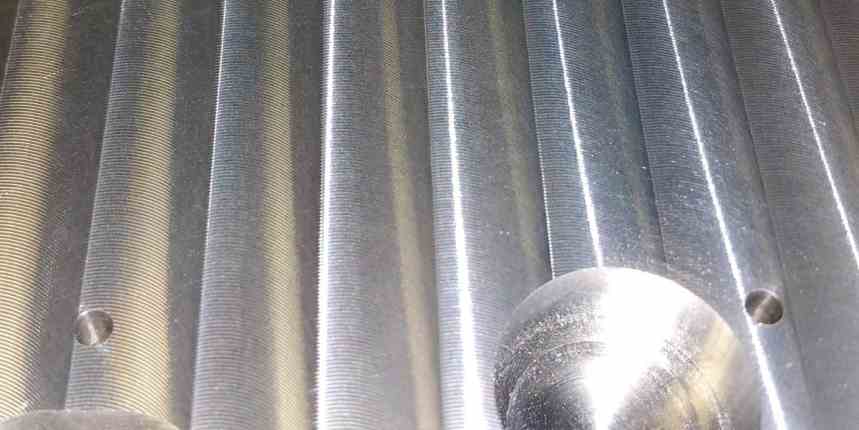tips on how to buy mould easily

It's always intricate to invest in a mould, as there will probably be numerous backwards and forwards amongst new buyer and manufacturer before the final product is decided. All the same, the following suggestions may possibly spare you time, to make the overall process little bit simpler and easier.
Come up with the particular RFQ that goes into a large amount of points.
As experienced as moldmakers are, these folks won’t manage go through your brain in terms of what you’re searching for. Integrate as much info as it can be at this stage, such as range of cavities, the steel, the desired life time of this mold, or any pledges which you may call for. Any time you aren’t too confident about any one of these topics, it's possible to reveal your moldmaker, and they will be ready to help you work out what’s compatible with your company needs. The better precise you construct your RFQ, the more exact a estimate you will get frequently.
Be honest for why you want to know a price quote.
When you quite simply desire an overall estimate to pass on to other section, then allow for the moldmaker know- they will likely then consider getting to you speedily. Making a precise price quote will take considerable time, and it ’s definitely not acceptable to waste the moldmaker’s times when you don’t want too much detail, or if you may not purchase from them.
Do not trespass on a moldmaker’s original creative thought.
The creative ideas and advice supplied by your injection chair mould maker remain their intellectual property- you can’t simply carry those tips to someone else to do it for you. Any time you select another moldmaker, in that case take their solutions on board- not only is using somebody else’s creative ideas not fine, but it could also mix up the final moldmaker, who won’t fully understand the reason why those hints were created from the beginning.Take into consideration forming a collaboration with your moldmaker. By way of working closely with your moldmaker in the case of prices, schedules, and component volume requirements, you will be capable of act as a crew to arrive at better end results in the future.
Maintain an easy way for communication with your moldmaker through the task.
Plenty of moldmakers will be thrilled to supply continuous move on data, and stay you updated on the latest advancements with your construct. It's essential that you know every thing is progressing to plan, so if you need any information, be confident to inquire to enable you to put your mind confident.
Don't forget to at all times make your payments by the due date.
Almost all moldmakers work to a tightly fitted funding, and call for expenses to be handed over up-front previous to they can head out with your produce. If you put it off carrying out expenditures, subsequently you won??¥t obtain your mold punctually- it's as easy as that. Different moldmakers will offer diverse payment choices, so speak with them to ascertain an agenda that works best for you and himvariation of your component structure will likely result in altering the mold as well. If you result to making modifications to your part design while your mold is getting built, you will be not likely to secure the mold from the cost offered, as well an original timeframe. Whatever adjustments will mean the mold need to be re-structured as required, which increases both the price and the duration of the mold construct.
Discover timeframe in the event that your mold will be
There are different definitions for a achievement date- they could normally include the moment final payment is made, to when you attain a example part, to shipping of the end product. In many instances, a mold is regarded as complete only when it's completely ready to develop the part it is intended for. A lot of moldmakers will be willing to make very small adjustments to help make a part consistent with print technical specs. If these dimensions adjust late in the game, then the mold may still be regarded as finish- any extra changes should be paid a commission .
gate design
The gate channel in the plastic injection mold serves to convey the melt coming from the
nozzle of the injection molding machine to the cavity with the lowest possible pressure
and heat loss, in shortest possible time and without thermal degradation. In
multi-cavity molds, the melt must be supplied to all gates uniformly.
Another aiming dominates the mold group called “family molds”. These are cavities
with different geometries and melt flow distances with a common gate system to
reach a synchronous volumetric filling (for a cavity with small flow distance a gate
branch with a higher pressure loss has to be attached). This requirement of “total
balancing” is based on the principle of equal pressure loss in all flow paths to the
end of the cavities.
Only when there are equal cavities, the pressure loss in all gate paths is kept equally
achieved by a runner balancing. The most successful balancing for plastic injection molding is that one with equal
runner flow paths, the so called “natural balancing”, which oen leads to significantly
longer gate paths, greater material losses and to larger molds.
As an alternative, the different cross-sections of the runner can be
balanced, but this is only reliable if the calculation was done using sufficient element
fineness in the simulation system and secured process data. In narrow gates the risk
remains that also in an unbalanced runner the cavities closest to the
central feed are filled last, because of melt stagnation in the gate and consequent
freeze-off, in extreme cases.

The position of the gate on the molded part is largely determining the formation
of weld lines (meeting of melt fronts) and air traps. The proceeding of the melt in
thicker cross-sections is giving big difficulties when the air trap is not detected
until the mold is finished
Vertical Injection Molding Process
Vertical Injection Molding Process

What distinguishes a micro injection process from a “normal” Vertical Injection Molding
process? Except for parts or structure sizes, the process is almost identical. Oen,
even the same procedures are applied, both in the actual injection molding process as
well as in the manufacture of the molds. Several studies (NEXUS Task Force Market
Analysis) also point out the current potential as well as future developments. The
entire process is very important in microinjection molding. Therefore, the process
is also oen referred to microsystems technology (MST).
The coordination of the process includes:
- Molded part,
- Injection mold,
- Injection molding machine,
- Peripherals (e.g., clean room, handling facilities), and
- Quality assurance and further steps
should be an integral element of the MST.
This presents a new challenge for designers, project engineers, as well as development
engineers.
Molded Part Design
In micro injection molding, two major groups of components can be differentiated:
Injection molded parts (macro-injection molded parts) with microstructures or
areas with microstructures . This mostly affects the surfaces.
Micro injection molding parts, in other words, small parts with low weight (mass
in mg) and the smallest dimensions and structures .
In either case, different tolerance, surface features, and accuracy may be required.
For the micro injection molded parts themselves, the same rules apply (e.g., avoidance
of sink points, etc.) as for “normal” plastic parts. Experience in micro-mold
making and preliminary testing is mostly necessary. Here, the collaboration with
the customer is a priority, much more so than in the area of standard shapes.
ENGINEERING AND DESIGN ENGINEERING

ENGINEERING AND DESIGN ENGINEERING knowledge is not only of vast importance in the plastics industry but an essential foundation for those wishing to properly assume positions of responsibility.
The plant manager must thoroughly understand steam pressures with relationship to temperatures, hydraulics, and various other details of mechanical engineering.
In addition to this, the molding plant executive must share with his subordinates in an intimate knowledge of presses, mold design and the theory of efficient molding technique.
Where a plant manufactures its own molding materials, a chemist is often required to keep the raw material supply under proper control, and the manager should also have at least a fair conception of this phase of the business.
In the tool shop or die repair department the men must be specially trained in plastic chair mould design and the draftsman, too, must be capable of making up blue prints showing details of die design.
The estimating department is, of course, furnished with figures to use for overhead and administra- tive percentages but the estimator must be thoroughly experienced in all molding and finishing operations in order to prepare reasonably accurate estimates.
Moreover the plant superintendent or production manager has to know the press capacities, total pressures, and mold dimensions in order to properly adapt the press to the mold.
If all those component parts function properly from an engineering standpoint, then the coordination necessary to efficiency will soon be attained. In the following chapter we shall deal with the production phase of the business, but at present we must devote considerable time to design in plastics.
Design in the plastic industry is important from two points of view. In the first place, artistic design is essential to make the product have so-called eye appeal; and secondly, the design must be practical from an engineering or molding stand- point. It is, of course, with the latter that we are chiefly concerned.
Technical design of a plastic molded part has to do with not only the piece itself but also the mold from which it is to be produced. Invariably there are numerous different ways in which a piece can be constructed.
It should be borne in mind, though, that there is only one correct way of design- ing the mold, and a knowledge of molding technique will decide what this design should be. Strangely enough, the latest trend toward stream lining is directly along the lines of the most efficient design as sought by the plastics specialist.
Consequently, the industrial artist is prone to design products closely consistent with mechanical design for the average molding requirements. In order to cover this subject thor- oughly we shall have to return to fundamentals and gradually get into the more complicated ramifications.
Injection Molding Process
Injection Molding Process

Injection molding is a typical process for the production of parts molded in large
volumes, frequently used in high mass production. The associated mold costs are
in comparison to other processes relatively high [1 to 7]. Experts know that the
profitability of injection molding starts at 10,000 pieces, in some cases it starts at
3,000 pieces depending on the complexity of the molded part and expenses for the
mold. The number of cavities in a mold is mostly under 100. Molds for extreme
mass production though have even more “drops” .
The percentage of production costs for example, the demand of energy or space
decreases, the more cavities are brought into a production unit. However, the
fall-out risk increases so, that a lower cavity number has been implemented than
technically possible. It is a special advantage that very complex elements of the
molded part geometry for example, external and internal undercuts, snap-in noses,
hinges, spring elements or internal threads can be produced with high degree of automation. These can be in the weight range of micro-injection molding of a few
milligrams up to large parts of more than 50 kg .
Injection molding machines are characterized according to their clamping force:
From 50 up to 100,000 kN, for example the production of boat bodies or wet cells
of pre-fabricated houses. It is typical that machine sizes in the range of 100 to
30,000 kN are manufactured in small series.
On the other hand the injection molds are generally individual items and therefore
very valuable production resources. Their availability can be of crucial significance.
It is possible that a higher investment is required into the mold than into the
machinery itself.
As heart of the machine the heated barrel of the injection unit can be taken containing a screw which can rotate and move axially backwards during plasticizing and works
as a non-rotating piston when injecting and during holding pressure time.
The function of the clamping unit is to move the one mold-half called “clamp”,
“movable” or “ejector” half towards the stationary, “fixed” half and the application
of clamping force to seal against the separating force of the cavity pressure.
Relatively high pressures are needed, not under 200 bar, mostly in the range of 300
to 1,200 bar.
Due to the involved areas, forces are created which must be taken into
consideration when designing the side walls of the mold or the needed clamping
force of the machine. Calculations within mold design will take oen a mean value
of 1,000 bar. Such a high pressure level is especially needed because sufficient
shrinkage compensation must occur during the compression of the melt.
Machining Marks
Machining Marks

For maximum fatigue life,all bored and drilled holes should have a smooth finish, without any machining witness marks showing. Special drills are available that impart a smoother finish than a twist drill where this is necessary.
Reaming would give a better result but this can be difficult to do, as well as being an expensive operation, and is therefore rarely used. Mechanical honing is even more expensive and almost never used.
A more practical alternative is fluid bed-honing. In this process abrasive slurry is forced, under pressure, inside melt flow channels. This has the effect not only of increasing the fatigue life but also of improving the polymer flow.
Although it may seem that these are extreme lengths to go to, these factors become very important on tools subject to millions of cycles in preventing premature failure if maximum economy of production and trouble free operation is important, for example in very competitive markets.
Water cooling holes are nearly always left with a drilled finish. While this promotes turbulent water flow, it also promotes corrosion. The corrosion starts at the tool marks and progressively eats into the steel, creating a sharp-notched effect. As the corrosion effect cannot be seen, the problem does not become apparent until water leaks start occurring.
The walls of cavities are always highly stressed on every injection cycle, by the pressure of the incoming melt. Any channels or screw holes in the cavity insert can worsen this problem, with each feature of this type creating stress raisers.
If channels are too close together, this has the cumulative effect of acting like a series of perforations and will severely decrease the fatigue life. The designer can compensate for this by ‘overdesigning’ in most cases. Where space is at a premium, however, this is not possible and calculations should be carried out to ensure adequate strength. Such calculations can be tedious and the application of a few rules will enable the designer to avoid potential pitfalls. The most important of these are:
- Do not make wall thicknesses too small.
- Apply adequate safety factors.
- Avoid excessive steel hardness.
- Avoid water channels and holes being too close together.
- Avoid poor finishes on holes.
- Avoid sharp corners and notches.
Contributed by Steven,a China plastic mould maker:
http://www.myplasticmold.com/cap-and-closure-mould
Ecnomic consideration for automation
ECONOMIC CONSIDERATIONS

In order to evaluate the extent of an installation with which to proceed, the following points should be considered:
- an analysis of the plastic molding products currently being produced, the markets, the present costs, and the possible savings through automation; and
- the possible savings by revising the tools and procedures so as to conform with the latest and most advanced techniques with standard tooling.
In the competitive economy that characterizes our business organizations, all products have limited total sales in view of limitations of demand. Since profits are usually based on a percentage of total costs and automation programs tend to reduce costs, total profits may be reduced through automation. It is wise to review this consideration before blindly going ahead with an automation program. Thus increased production and sales should result from an automated setup in order to justify its existence.
Robotic Automation for Industrial Processes
DESIGNING FOR PRODUCTION
operations as turns, bores, drills, reams, taps, and gages must be recorded in sequence. Once the sequence of the elements is determined, then related information, such as feeds and speeds, commercial perishable tools, special perishable tools, tool-sharpening equipment, locating points for machining and transfer, means for quick and accurate tool setting, inspection stations, gages, and chip removal, should be investigated. After all details of the requirements of the job are carefully planned, then an investigation should be made of available standard equipment to determine which type is preferable and if it can do the job. When studying the equipment available such considerations as coolant systems, type of transfer mechanisms—air, hydraulic, electronic, or mechanical —foundation specifications, and methods of chip removal should not be overlooked. A finished piece of automation equipment is made up largely of standard elements such as conveyors and air, hydraulic, and electrical control mechanisms . After the standard machinery has been selected, then the necessary hardware and mechanisms required must be designed and added to the apparatus. Each of the mechanisms required, whether for holding, moving, or ejecting components, must be carefully considered as to how it will be attached and its operation synchronized with the system.
by steven,a mold maker: